Premixed infant cereals: photo albums tell the story
Premixed, fortified infant cereals are eaten in small quantities but play a big role in the world food system. They were first developed in the 1930s at Toronto’s Hospital for Sick Children (as “Pablum“) then spread quickly to near universal use in nutrition assistance programs, evolving from INCAPARINA in the 1960s to SuperCereal+ today. Similar products are sold in almost every food market around the world, with many local versions jockeying for shelf space against multinational brands like Nestle’s Cerelac. Here are some packets sent to me for the study of 108 foods from 22 countries described in a recent New York Times story.
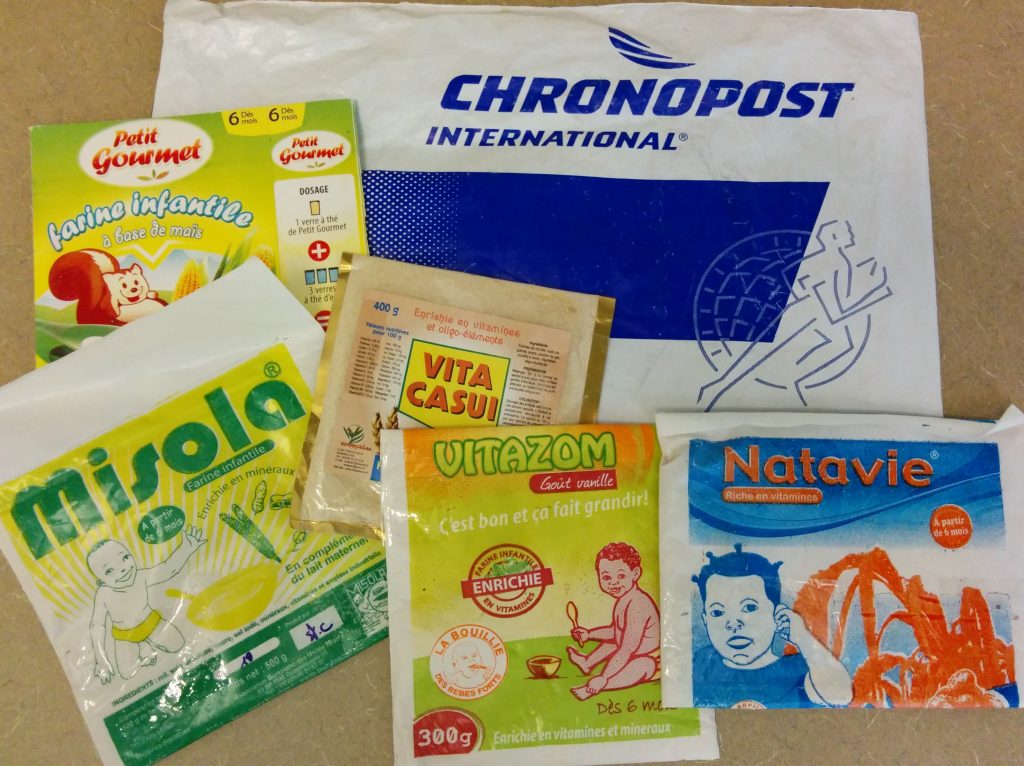
Infant food samples sent from Burkina Faso for Mat. & Child Nutrition (2017)
In my office I’ve kept the packaging from over 200 samples collected in dozens of countries, for the publications described on my research page. Photos are helpful to show their diverse package types, reflecting the different ways that premixed cereals can be made and marketed. What they have in common is being premixed and usually precooked, providing a starchy staple like wheat, rice or maize fortified with soybeans and often other ingredients such as powdered milk. To see how these foods are made and marketed, I’ve also done a lot of infant food tourism to see these products in action, including pics of how they’re made and packaged in Ghana, from me in 2010 and an undergraduate project in 2019.
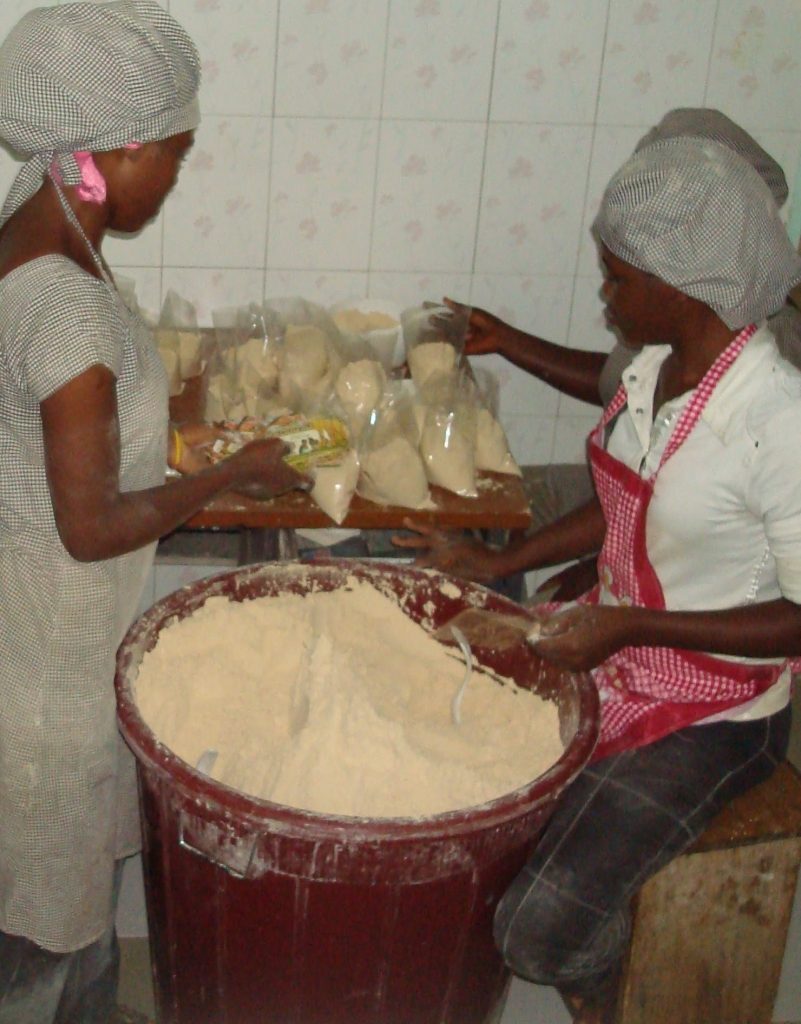
Packing a premixed infant cereal for sale in Accra, Ghana (January 2010) 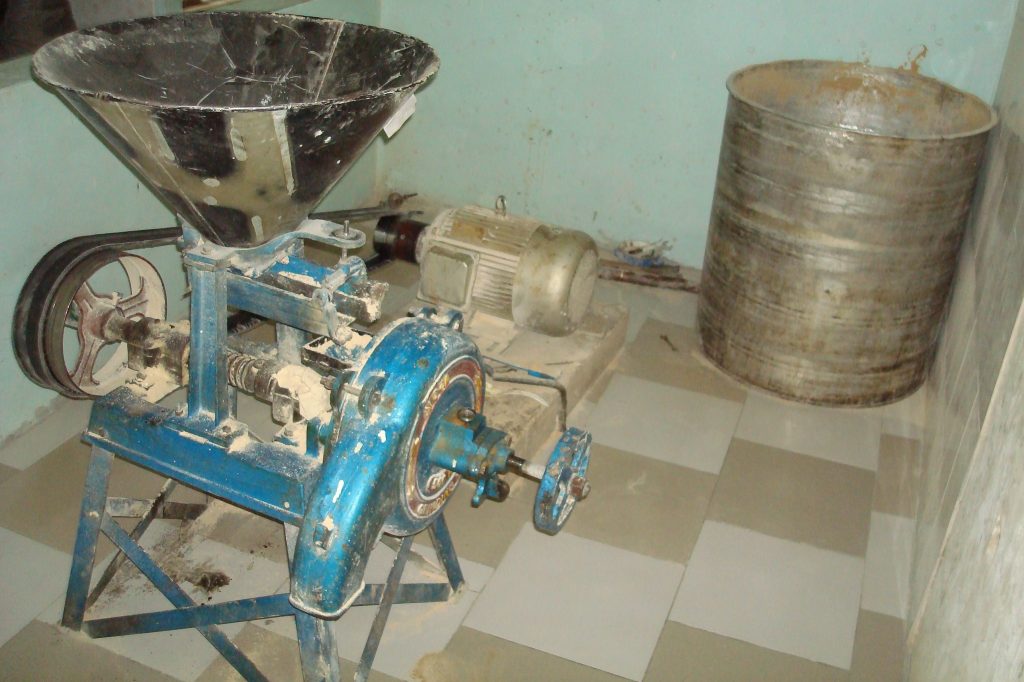
Electric mill for premixed cereals in Accra, Ghana (January 2010)
We also have many photos of how premixed cereals appear on retail shelves in Colombia (2017) & Ghana (2018), and from a student in Thailand (2018), as illustrated by these two examples:
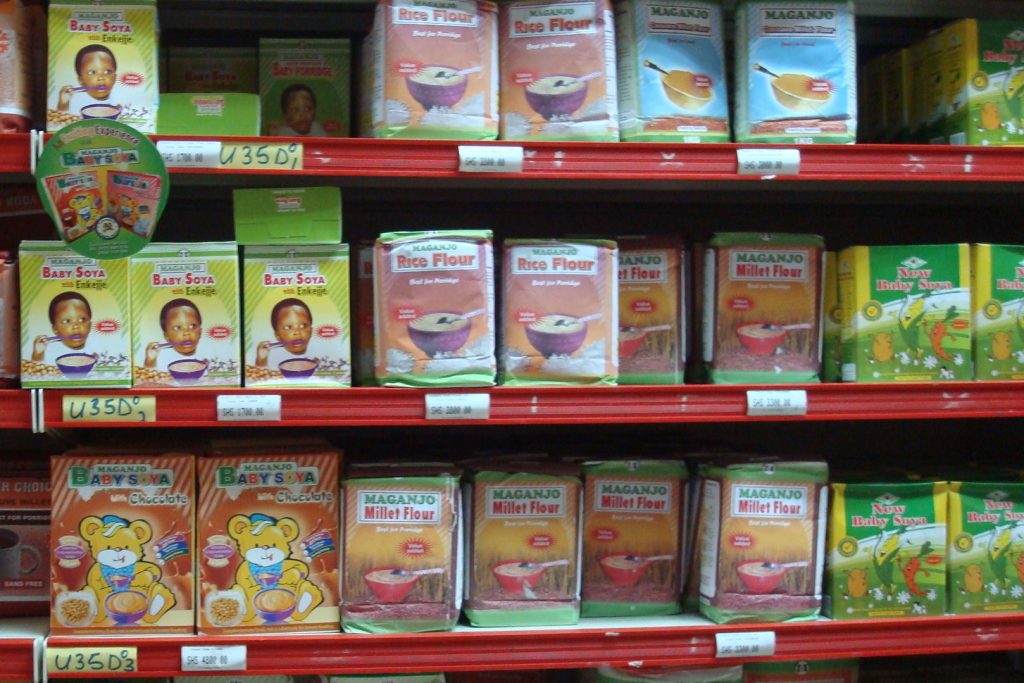
Local premixed cereals for sale in Kampala, 2011 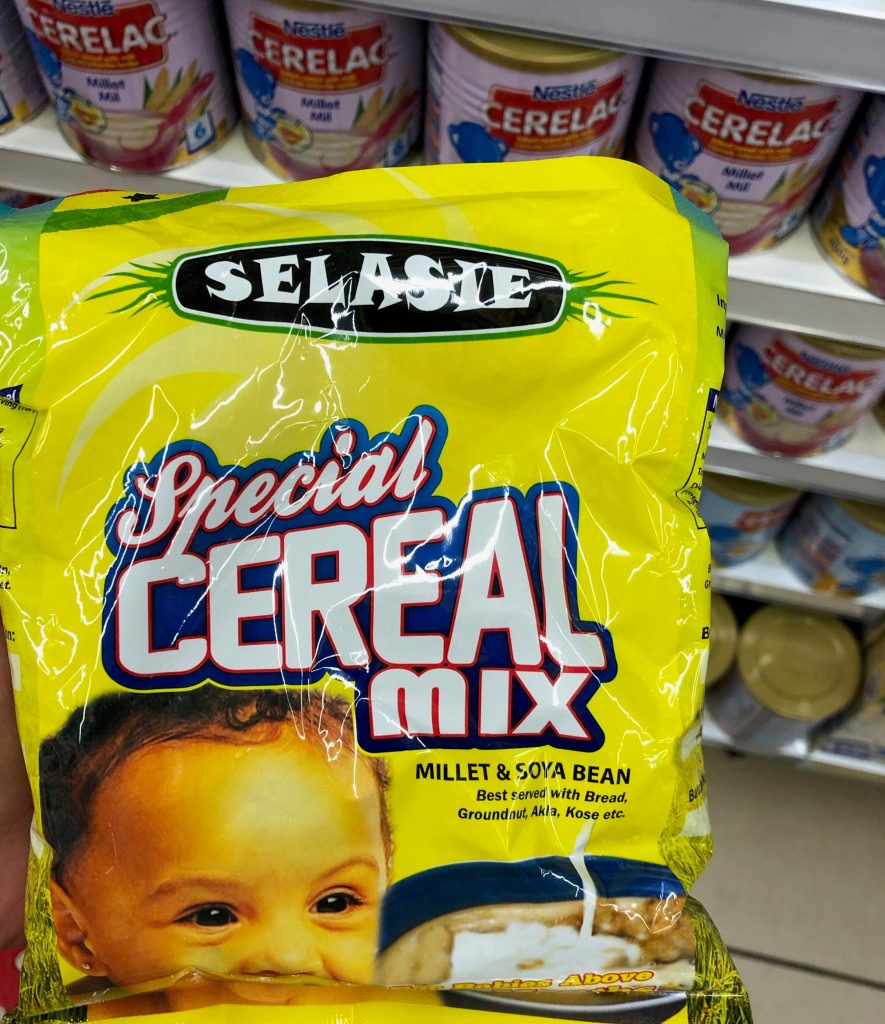
Can a local producer compete with Nestle’s Cerelac? (Photo in Accra, 2019)
The genius idea behind infant cereals is that premixing and precooking allows the dry flour to be stored and quickly boiled up in small portions, making a semi-soft porridge that can be fed to infants as one of their first solid foods after 6 months of age. That porridge helps caregivers complement continued breastfeeding with additional protein, lipids and micronutrients needed for rapid growth, while also introducing mashed or chopped versions of family foods until the child can chew and digest sufficient quantities of the family diet after about 2 years of age. Simple versions of these cereals can be made inexpensively by local millers, and they can be very nutritious — but often aren’t, because there are not yet any international standards that could be use to ensure uniform ingredient ratios and predictable contents.
The tragedy of premixed cereals is that users cannot see, smell or taste their nutrient composition. Caregivers know this, so the market for premixed cereals runs on trust that producers will maintain high standards and never cut back on their most expensive ingredients. The need for trust helps explain why heavily advertised multinational brands succeed despite competition from local millers, why local firms often choose to signal their quality by charging prices far above their cost of production, and why creating and enforcing international standards for nutrient composition and marketing would help caregivers access local versions at low costs.
Last and least, about sharing photo albums: All of this had been more easily accessible on the sadly defunct G+ platform:
